Race Ruins Everything
Jared Taylor, American Renaissance, February 23, 2024
Why ShotSpotter got shot down.
This video is available on Rumble, BitChute, and Odysee.
In America, race ruins everything. If that’s an exaggeration, it’s not by much.
Take ShotSpotter — acoustic technology that tells police almost instantly where gunshots have been fired in their city. The only reason it exists is because so many BIPOCs shoot each other. And the only reason it’s controversial is because so many BIPOCs shoot each other.
First, the facts. As this graph — straight from the CDC — shows, in 2021, black American men — that’s the tallest bar — get shot to death at 17 times the white rate. Seventeen times.
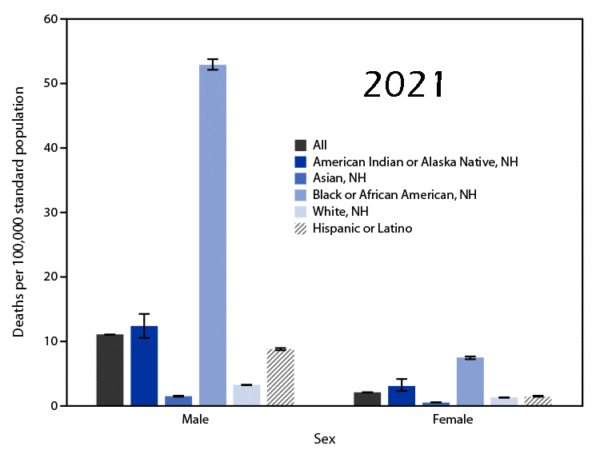
Whites are the lighter bar just to the right of blacks. American Indians are shot to death at four times the white rate and Hispanics at 2.7 times.
And these are rates at which men of different races are shot, not at which they do the shooting. Those numbers would be even worse, because blacks and Hispanics are a lot more likely to shoot a white man than the other way around.
When there’s gunfire in a city, 70 to 90 percent of the time, no one calls 911. Wouldn’t it be nice if police knew right away and exactly where someone opened fire? ShotSpotter tells them. But that’s “racist” because police then go into non-white neighborhoods. Chicago just tied itself into knots over whether to keep using ShotSpotter because most people stop thinking if race is part of the problem.
First, this is how ShotSpotter works. [0:44 – 1:25, 0:29 – 0:43] PLEASE LEAVE IN THE TIME STAMP
ShotSpotter can tell officers there are probably several shooters, which way they may be moving, and whether there was automatic-weapons fire. It gives them the location right down to a city block or street corner. This is much better than getting a vague 911 call and having to search the neighborhood.
According to the company, it costs “$65-90k per square mile per year, with a $10K per square mile one-time Service Initiation fee.”

ShotSpotter has been used in more than 100 cities, and many expand the coverage area. Here are some that liked ShotSpotter so much they paid to, in most cases, at least double the service area.
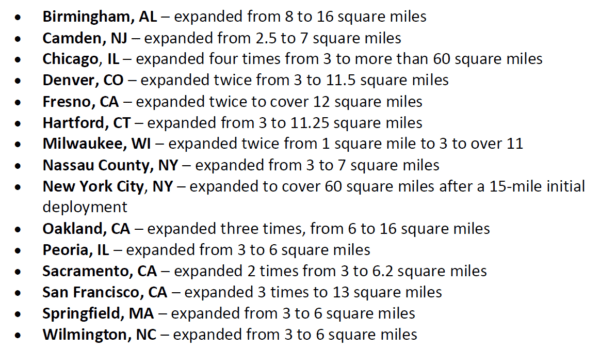
Kruger National Park in South Africa uses it to stop poaching.

Credit Image: © Media Drum World via ZUMA Press
ShotSpotter is so accurate that its data on timing and location of shots have been accepted in criminal trials in federal cases and in 17 states.
Here is a typical internal police memo — this one from the Oakland PD.
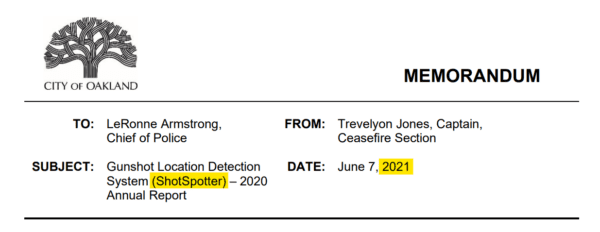
It says: “ShotSpotter alerted OPD to 6,053 unique gunshot incidents from January 1 – December 31, 2020. Of those alerts, 5,507 (91%) were not called in by the community and OPD would not have known about them . . . . OPD was able to provide and coordinate immediate emergency medical response to the 101 surviving shooting victims; OPD personnel believe that several of these victims survived the shootings specifically because of the quick response.”

Oakland makes no apology for putting the microphones “in areas most prone to gunshots based upon historical data.”

Where else would you put them?
So, why did Chicago hit the panic button when its seven-year ShotSpotter contract came up for renewal this month? Mainly because the new anti-police mayor, Brandon Johnson, promised during the campaign to get rid of it. He said it was “unreliable,” “expensive,” and “Played a pivotal role in the police killing 13-year-old Adam Toledo.”

Who was Adam Toledo? He was a Mexican 13-year-old in special ed. On March 29, 2021, he was out at 2:30 in the morning with a 21-year-old member of the Latin Kings named Reuben Roma.
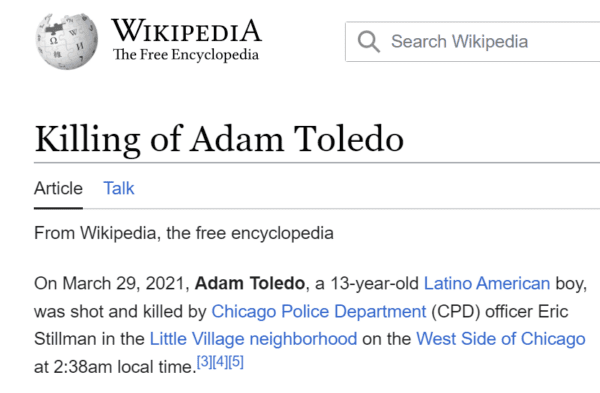
Gang-member Roma fired six shots detected by ShotSpotter. When police arrived, Roma gave the gun to 13-year-old Adam, who ran from the police. An officer chased Adam in the dark, with a light on his pistol, shouting at him to stop and show his hands. This is the bodycam frame the moment the officer fired a single round.
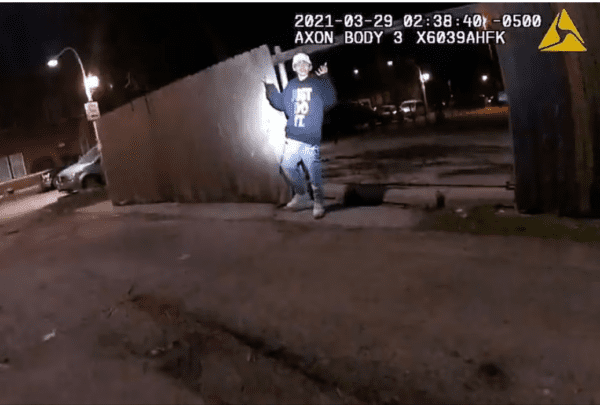
Just 5/6 of a second before, Adam had a gun in his right hand, which he threw behind the fence next to him. The officer fired when he saw the boy move his hand.
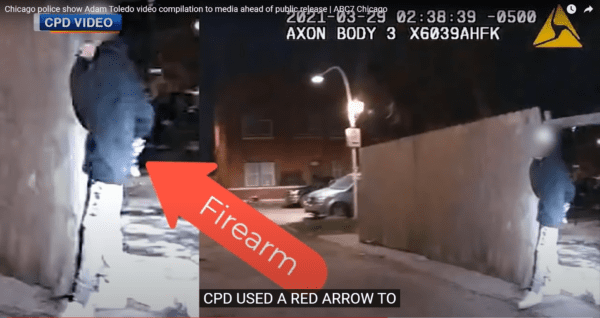
The usual people screamed for the officer’s scalp, but he was not charged.
What’s this got to do with ShotSpotter? Precisely nothing. The system worked perfectly, and an officer arrived so quickly the perps were still on the scene with the gun.
The other big anti-ShotSpotter argument was a report by something called the MacArthur Justice Center run by someone named Amir Ali, and whose motto is, “We represent people who have been harmed by the criminal legal system and fight to vindicate their rights, hold people with power accountable, and transform the system.”

It claimed that 89 percent of the time, when Chicago police respond to ShotSpotter, they find no evidence of gun-related crime, so it’s a fraud. Even worse, this fraud is on “people of color.”
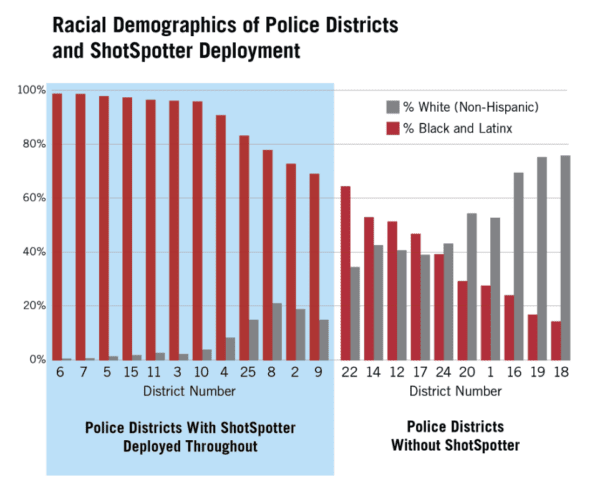
In this graph, the blue shaded part on the left are Chicago districts with ShotSpotter. The red bars are black and “Latinx” people, and the gray bars are white people. ShotSpotter covers only certain neighborhoods, and that means “racialized and oppressive patterns of policing in communities of color.”
And so, to the delight of NPR, which called ShotSpotter “allegedly inaccurate, ineffective, and even biased,” Chicago canceled the contract. Except it didn’t.
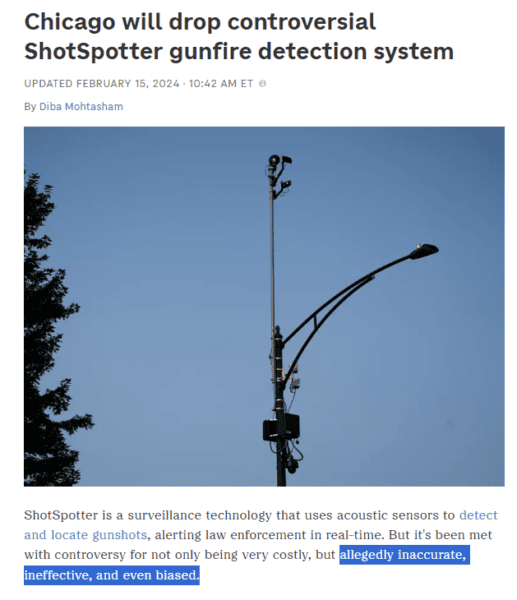
At the last moment, it decided to keep it another seven months, to cover the most murderous summer months and keep the city safe during the Democratic National Convention.
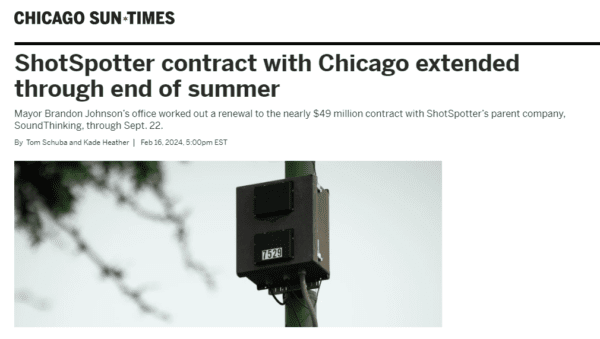
NPR missed that story.
But if you want to know what goes into deciding whether to use ShotSpotter, just go to Durham, North Carolina. It paid $197,500 for a one-year test program through last December. It covered just three square miles, where there was the most gunfire. It posted a public portal, updated every day, so people could see exactly what ShotSpotter was doing. These were the final results at the end of the test.
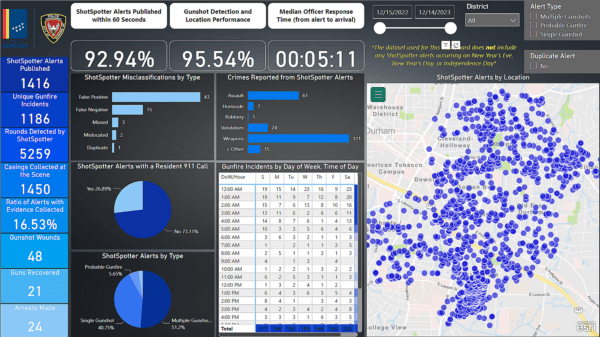
On the right is every location of shots fired. On the left, you see that there were 1,416 alerts for 1,186 shooting incidents. The system counted 5,259 shots fired, and responding officers found 1,450 shell casings. They helped 48 wounded people, took 21 guns off the street, and made 24 arrests. Residents called 911 only 27 percent of the time. You can also see a tally of ShotSpotter failures: false positives, false negatives, etc. It’s all here.
Imagine 5,259 gunshots in one year. Might make you nervous.
So, a week before the contract was to run out, the local news reported: “Durham City Council looks to extend ShotSpotter contract, draws support from community.”
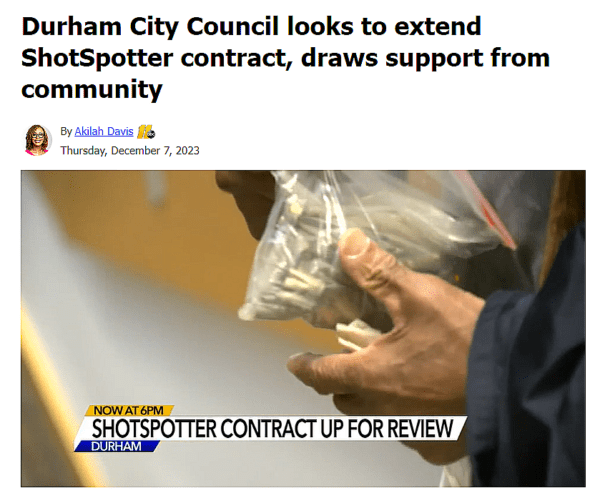
See that image? This fellow, who lives in the ShotSpotter area, showed the council a bag of shell casings he picked up. “I’m not looking for shells,” he said. “They are on the sidewalk and the curb.”
Another resident who had been caught in a crossfire said, “I didn’t have time to call 911. When Durham police showed up, it was a relief that they showed up and take over the scene. So yes, it is effective.”

Durham Police Chief Patrice Andrews, who is black, said ShotSpotter cut officer response time by almost two minutes, from 6 minutes 38 seconds to 4 minutes 58 seconds. “That’s a very good thing,” she said.
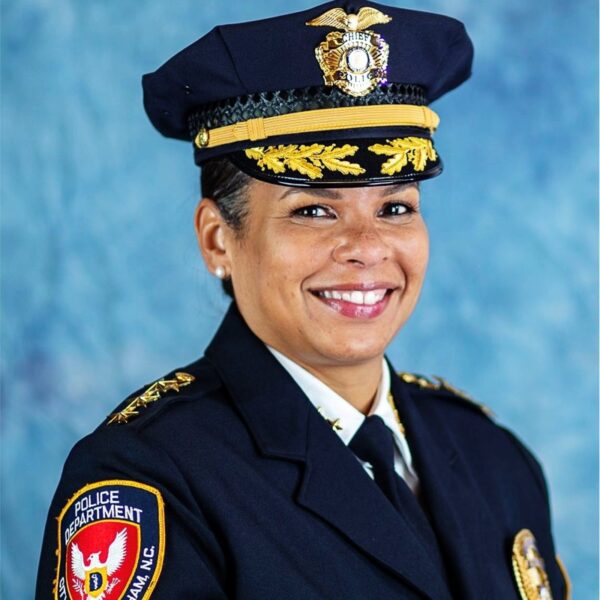
A week later, a different crowd showed up for the vote on the contract. A hundred people yelled and waved signs before the meeting began.
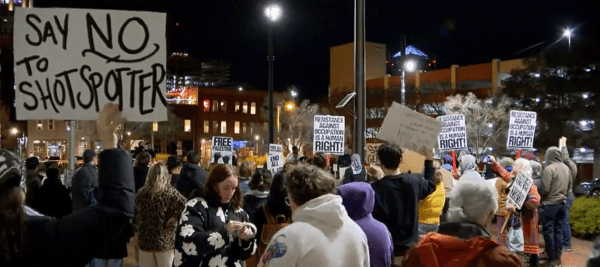
Inside city hall, they were so rowdy, the mayor told them he would throw them out if they couldn’t keep quiet. They went up to the mic one after another — mostly white people — and railed against over-policing. Some said ShotSpotter killed Adam Toledo in Chicago.
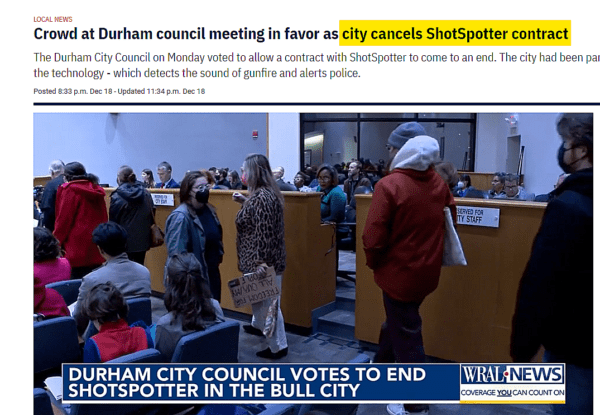
The city council reversed course and voted four-to-two to kill the contract.
Durham County Sheriff, Clarence Birkhead, who is also black, was shocked and put out a statement, saying, “Residents have expressed overwhelming support for having this technology, along with the increased presence of law enforcement in the community. You cannot put a price tag on that level of peace of mind.”
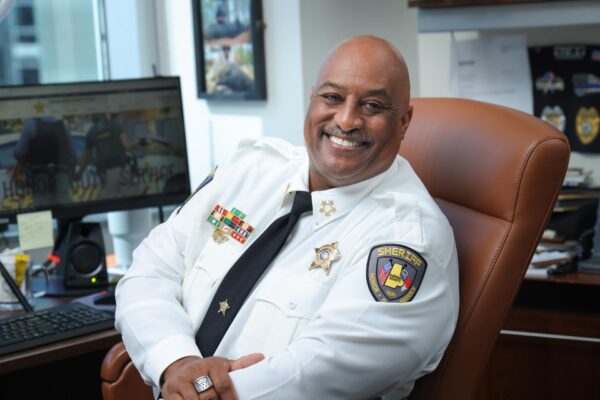
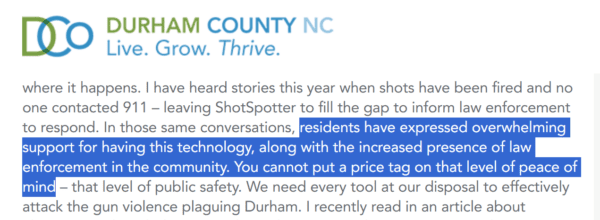
Mayor Leonardo Williams, sitting there in the middle and also black, voted to keep ShotSpotter. The next day, he said, “I couldn’t sleep last night because I received so many messages from people who actually live in the square mile area where the ShotSpotter technology is incorporated.”

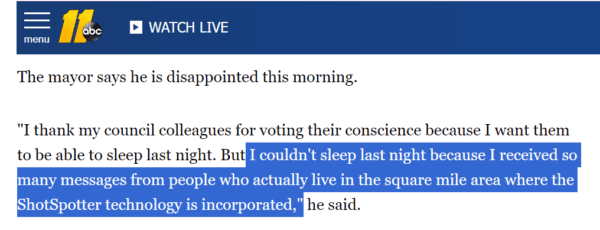
Durham County Fraternal Order of Police expressed “our support for the technology, which has proven effective in enhancing public safety.” See the name of the FOP president, Robert Gaddy?
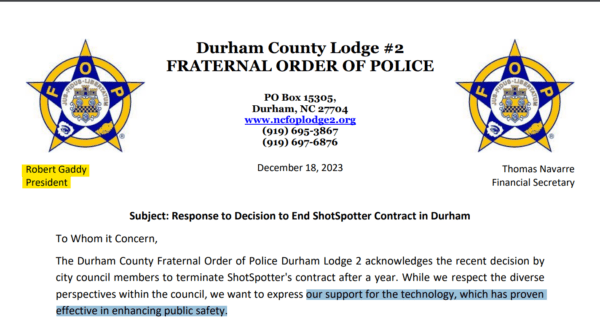
Gracious, he’s black, too.

So, now what?
“With ShotSpotter gone, some in Durham worry about gun violence escalating: ‘What do we do now?” “There is now a sense of hopelessness among people living in the communities impacted by the decision to discontinue the gunshot detection technology.”
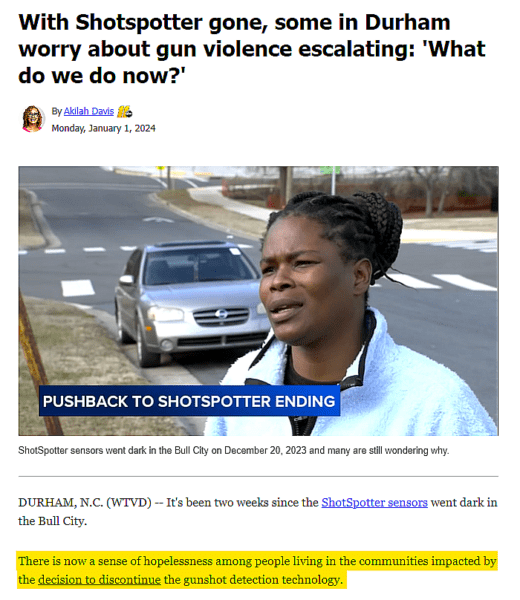
Ashley Canaday, shown in the photo, is president of a neighborhood council. “Canady was skeptical when ShotSpotter first rolled out, but one year later given the results, she is convinced it works. ‘The police were responding,’ she says.”
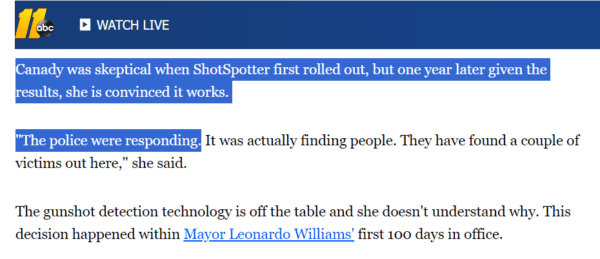
She noted that the people who killed the ShotSpotter contact don’t live where she does. “They can go to bed at night and sleep peacefully and we have to hear gunshots.” ***
A resident named Mark Vanhook says, “My wife is afraid that a stray bullet will catch her. There’s going to be more gunfire, I think. If they know that [the ShotSpotter mics] are down. It will pick up.”

So, who persuaded the city council to vote the other way? Local news highlighted two people. One was Danielle Purifoy who teaches geography at UNC-Chapel Hill.

She doesn’t go to sleep to gunfire. She said, “We need to stop listening to these companies that are trying to sell us safety . . . we need actual community investments instead of false solutions.”
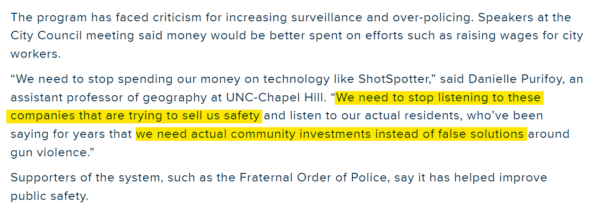
The publications listed on her CV are drenched with black resentment.
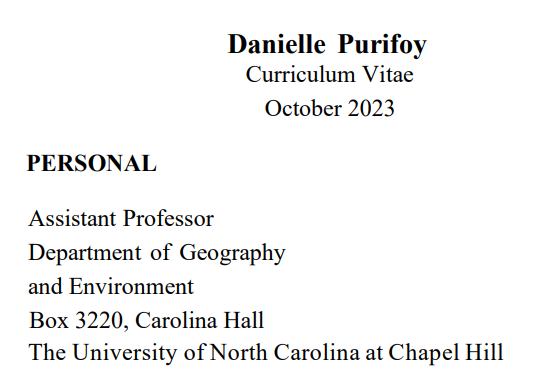
Titles such as “Remote Control Plantations.” “Integrating Food Justice and Environmental Justice.” And “Where are Black People in the Future?” Good question. Where are they?
The other big persuader was apparently this lad, Victor Urquiza.
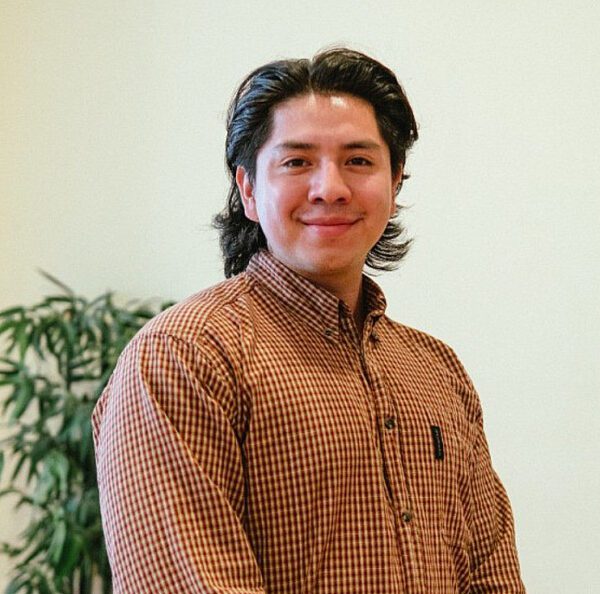
He said, “The ShotSpotter technology sets a dangerous precedent for communities of color, and that effect is an increase in surveillance without tangible results.”

So, who’s he? He was smuggled into the country at age four and is active with the Party for Socialism and Liberation whose motto is “for the planet to live capitalism must end.”


Last month he published “The Plunder of Mexico and My Journey as an Undocumented, Anti-Imperialist Organizer.”

The city council didn’t listen to the police chief, the sheriff, the head of the FOP, the mayor — all of whom are black — or the people who live in the crossfire — almost all of whom are black. Instead, they listed to a mob of white screamers, an anti-imperialist illegal immigrant, and a fancy blackety-black black black lady-PhD.
What did I say earlier? Race ruins everything — or just about — and most people suddenly become morons when race is part of the conversation.















